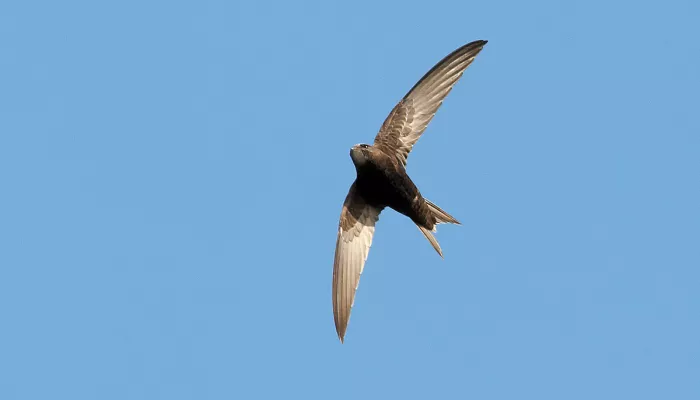| Statistics | |
|---|---|
| Length: | 16cm - 17cm |
| Wingspan: | 45cm |
| Weight: | 44g |
| Average Lifespan: | 9 years |
Swifts spend most of their lives flying – even sleeping, eating and drinking – only ever landing to nest. They like to nest in older buildings in small holes in roof spaces.
About
Swifts spend most of their lives soaring high in the sky, only ever landing to nest. They are easy to spot as they look like an arrow whirling through the sky, and often fly in groups. Originally, they would have nested in trees or cliffs but now prefer the roofs of old buildings like churches. Swifts spend the winter in Africa but travel to Britain every year in April and May.
They feast on small flying insects by catching them in flight. Insects collect in a special pouch at the back of the swift's throat, where they are bound together by saliva until they form a kind of pellet known as a bolus, which can be regurgitated and fed to chicks. One single bolus can contain over 300 insects, with some holding over 1,000!
How to identify
The swift is black all over, with a small, pale patch on its throat. Looking a bit like a boomerang when in the air, it is very sociable and can often be spotted in groups wheeling over roofs and calling to each other with high-pitched screams. It is larger than swallows and martins (which have white undersides) and, unlike them, does not perch on wires, buildings or trees.
Did you know?
Swifts spend almost all of their lives on the wing, even sleeping, drinking and mating while flying; they only land to nest.
How people can help
Specially designed nestboxes help this species to survive in our towns and villages, where renovation work often blocks the small holes they use to access their nest sites. You can help by adding one to your house.

